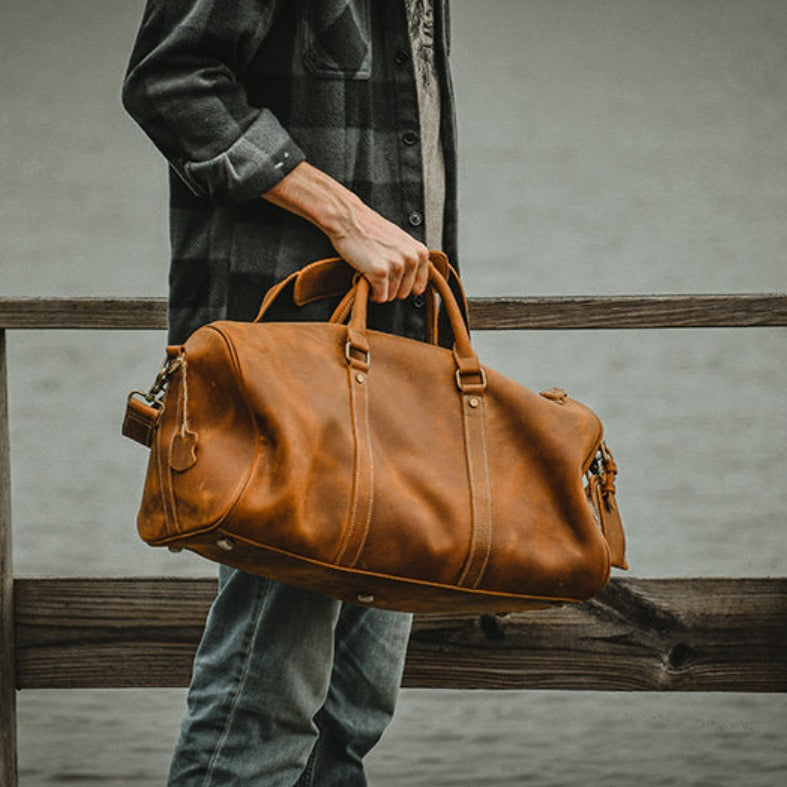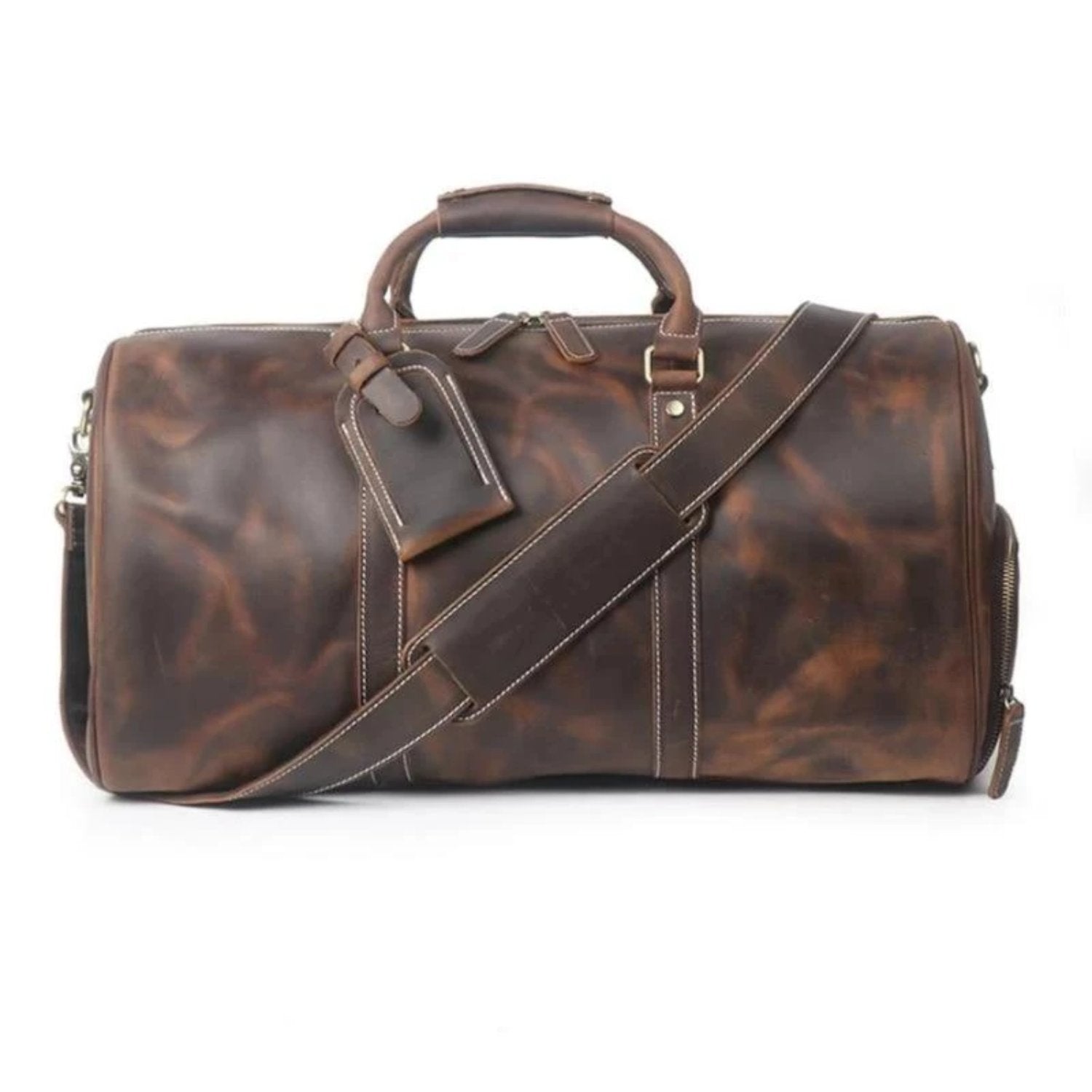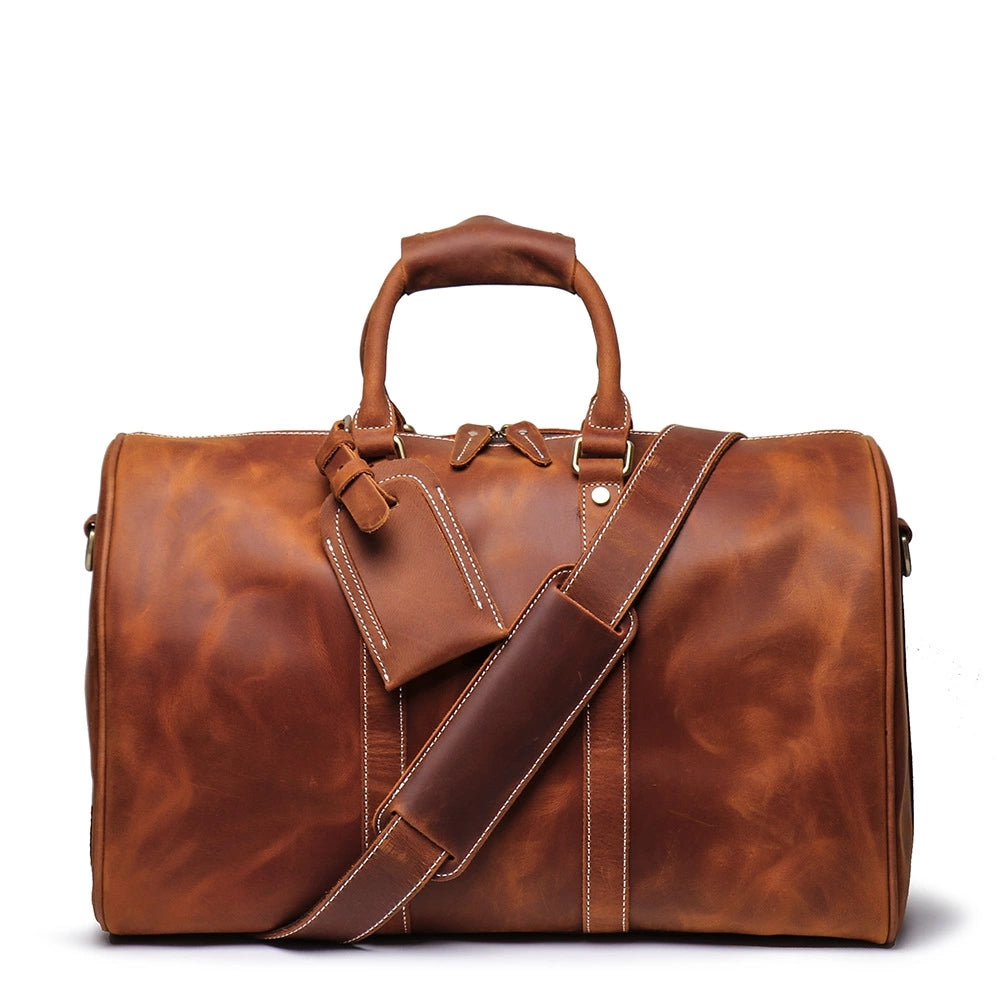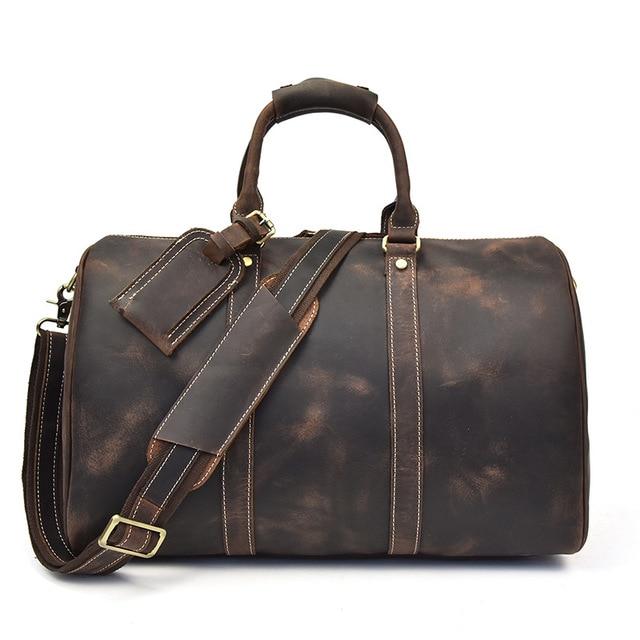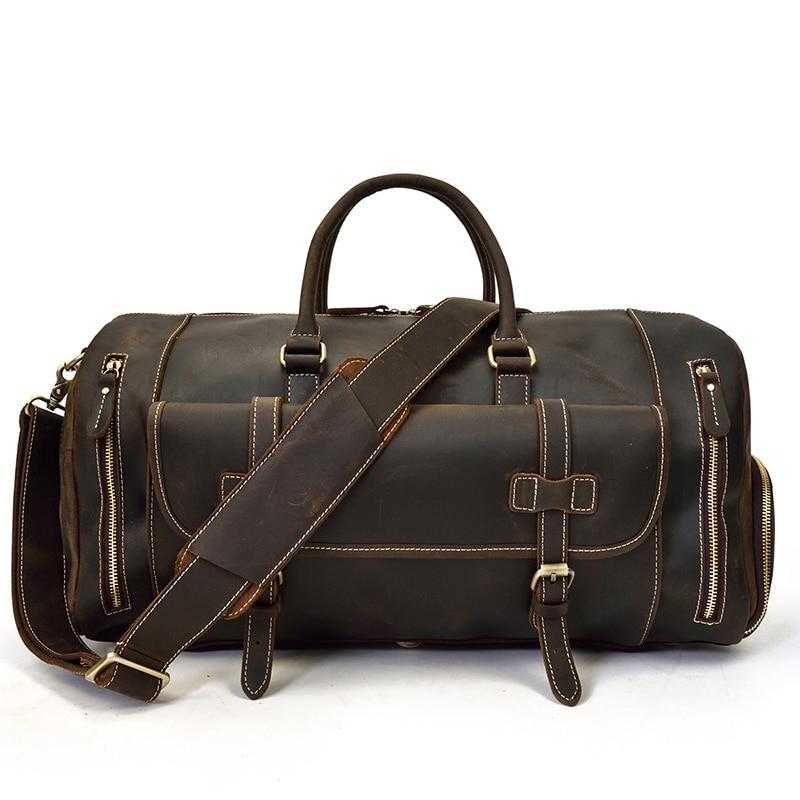
Soft leather is an unprotected general term for especially soft and supple leather. It has the properties of calfskin and goatskin, as well as exotic animal skins. Eel leather, for example, is very supple. Napa leather is well-known for its suppleness. Soft leather might be porous, but it can also be surface-colored. When producing soft leather, the tanner must ensure that the leather is as supple as possible. Smooth leather is typically referred to as soft leather, however, nubuck and suede can also be considered soft leather. Because the word is also applied to belt leathers, it is required to examine for a specific softness. In theory, an object labeled "soft leather" should be softer than typical soft leather goods.
The term "soft leather" refers to the soft and supple leather properties of particular leathers such as lambskin and deerskin. It is critical for the tanner to ensure that the leather is as soft as possible while creating soft leather.
The “5 Types of Leather”
While there are many other varieties of leather, many people are interested in the “5 sorts of leather”. They are often referring to the volume and layers of the original hide, present in the finished product. These include full-grain, top-grain, genuine, split-grain, and bonded leather, and considerable information about each will be provided. The material quality and features vary depending on where the finished leather originates from in the hide. Many other elements might have an impact on leather quality. These can include the breed of animal, the environment in which they lived, the food they were given, and the quantity of activity they received. Hides are a natural material, and as such, are heavily influenced by the lives of the animals from whom they are derived.
The meatpacking, tanning, and finishing methods used during manufacture can also have an impact on leather quality. Along with the leather grades that customers are acquainted with, we’ll go through leather grades as well.
What is a Leather Hide?
Great! Let's begin here. The skin of an animal is removed to make the leather hide. Due to its natural material, distinct features and properties enable it to fulfill its role. It often serves as a protective barrier. This protects the animal's interior organs. Along with hair or fur, it also protects from external factors such as sun, wetness, abrasions, and other everyday hazards. Here's a cross-section of a leather skin displaying the layers. It is made up of a few layers:

Leather Hide – The Grain
The grain is the leather hide's outermost surface. It is made up of tight, thick fibers. When the hair is gone, the grain is the layer that was exposed to the elements (air, rain, sun, etc.) and is generally quite strong and smooth.
Leather Hide – The Grain and Corium Junction
The grain and corium junction is where the tight outer layer of the leather meets the looser fibers of the corium. This junction combines the very desired grain layer with the more fibrous and loose fibers of the corium layer.
Leather Hide – Corium
The corium is a layer found within animal skins that is mostly made up of collagen fibers. These are more open and loose than the grain layer. However, this layer is ideal for making leather. The corium is the thickest layer of an animal’s skin. As a result, fragments of the corium may be found in top grain or genuine leather goods.
Leather Hide – Flesh
The flesh is the layer of the hide that is mostly made up of muscle and fat. It is not very beneficial for end-use leather applications. As a result, leather is frequently split to remove the layers above it, giving usable material of various grades and quality for the manufacture of leather items. When assessing leather grades and quality, it's critical to understand how the leather is prepared, cut, and polished.
Which Types of Leathers are the Softest?
Leather items are recognized for their extraordinary hardness and lifespan, not to mention their beauty and sensuous feel. As a result, leather is frequently a highly strong and rather inflexible material. However, there are some types of leather that have an extra soft feel to them that many people have yet to try. Cowhide is used to make ordinary leather products such as coats, couches, and other furniture. Cowhide is incredibly robust and unlikely to split apart, although this causes it to be slightly stiff when used to manufacture garments.
Lamb and deer skins may be used to make two more types of leather. These hides are likewise highly robust, but they have a considerably softer feel than cowhide. Let's look at why this is and what advantages they offer over cowhide leather.
Deerskin Leather: Soft Leather
Deerskin leather is significantly softer than cowhide and is noted for its great cold and wetness resistance. Because of the animal from which it is derived, deerskin leather has the potential to get warmer in cold weather while cooling off in hot weather, making it suitable for wearing at practically any temperature. Deerskin achieves these feats due to the structure of the hide from which it is formed, which has the inherent capacity to trap air between its layers, making it feel much lighter and softer than it actually is. Because of these durable qualities, many outdoor enthusiasts and riders rely on expert retailers like South Texas Tack to provide authentic leather gear that can withstand the demands of a western lifestyle
Deerskin is also softer than cowhide. Deerskin has a natural resilience to cold and has been known to get warmer in cold weather and colder in warm weather. The inherent strands in deerskin trap air inside, making the leather seem lighter and softer. Despite its softness, it is remarkably tough. Its fibers are abrasion-resistant and robust while staying very soft, however, this soft leather does not withstand wear and tear as effectively as cow leather.
Lambskin Leather: Soft Leather
Lambskin (sometimes known as sheepskin) is very wearable and soft leather. It is made up of natural lightweight layers that give it a characteristic, velvety touch. Lambskin is less brutally handled in manufacture than cowhide due to its fragile structure and requires more hand manipulation. As a result, lambskin is frequently more expensive than cowhide (which is why it is typically kept for luxury leather items). Even though lambskin leather is thin and lightweight, it is effective at keeping cold out. This soft leather, on the other hand, is more prone to stretch over time and does not accept abuse as well as cow leather.

Lambskin is the softest sort of leather available since it originates from an animal that has not fully matured, unlike other types of hide. Its delicate, airy layered structure gives it an incredibly smooth, velvet-like touch. The natural layers also serve to trap air inside the cloth, keeping you warm in chilly weather.
The Disadvantage of Soft Leather
The main disadvantage of wearing soft leather is its lack of sturdiness when compared to cowhide. While still highly durable (it being leather, after all), deerskin and lambskin aren't as resistant to harm as cow leather. This is especially true with lambskin, whose softness works against it to the point where it must be handled with care throughout manufacture to prevent destroying it. It is also more prone to stretching than either of the other alternatives and wears out faster.
Furthermore, these types of leather may be more expensive than ordinary cowhide, as their softer and more opulent look is frequently used in the production of more ornamental or fashionable clothes and accessories.
Caring for Soft Leather
Soft leather, like any other leather product, requires care and upkeep to remain strong and attractive over time. However, when it comes to caring, deerskin, and lambskin leather have different requirements than cowhide leather. This has as much to do with their softness as it does with the materials used to create them. Given its reputation for long-lasting quality, deerskin leather items require little upkeep. This isn't to suggest they don't require any care, as there are a few things you can do to assist your deerskin to preserve its natural properties and avoid being damaged.
Sunlight
To begin, keep your deerskin away from direct sunlight when keeping it. Excessive, continuous heat may dry up all types of leather, so storing it in a dark, climate-controlled room like a closet while not in use is the best option.
No Extra Waterproofing
Also, avoid using any water treatment solutions or waterproofing treatments on your deerskin. Deerskin is inherently water-resistant, thus attempting to waterproof it further would do nothing at best and may cause harm to your leather at worst. If your deerskin becomes too wet, just brush away excess moisture with a dry towel and add leather conditioner if the piece appears to be drying out.

Cleaning
Before cleaning stains, determine what caused them. If the region is greasy or oily, cover it with flour, cornstarch, or baby powder for two hours before washing with warm water and a light detergent and drying it. For other types of stains, just rinse with water and use a light soap if the stain remains. Be extremely cautious when attempting to buff out anything that seems to be scratched, since excessive efforts may badly harm the leather. Furthermore, deerskin leather is naturally patterned, so what seems to be a scratch may simply be the way the material is patterned.
Lambskin Care
Most of the same advice applies to lambskin. However, you must use extra caution while dealing with lambskin, since its delicate nature may allow it to become damaged much more easily than deerskin or cowhide. In fact, it is strongly advised that you use a lambskin protectant solution particularly formulated for sensitive leather to your things before wearing or using them for the first time. While you may acquire the necessary equipment and do it yourself, it is safer to engage a professional to perform it for you.
Leather Conditioner
Finally, whether it's deerskin, lambskin, or just cowhide, all leather items may benefit from a decent leather conditioner polishing. When conditioning your sensitive items, use one that is particularly made for exotic varieties of leather for the greatest results.
Remember to test any type of conditioner on a discrete section of your leather products before committing to using it, as it may have an unfavorable response to particular pieces of leather and result in serious darkening regardless of what the color looks to be on the cloth you'll be applying it with. Remember not to keep your leather in a plastic wrapper as this can cause it to dry out, and to put clothing items on cushioned hangers to assist them to retain their form.
Conclusion: Soft Leather
Soft leather is an excellent choice for soft, beautiful clothes and accessories that can withstand the rigors of ordinary life. Though neither as sturdy nor as inexpensive as cowhide leather, deerskin, and lambskin leather are more than worth the risk when it comes to feeling and looking fantastic.
FAQ: Soft Leather
What are the drawbacks of wearing soft leather?
The main disadvantage of wearing soft leather is its lack of sturdiness when compared to cowhide.
Why choose Soft Leather?
It's lightweight, comfy, and wearable, making it an excellent choice. Just don't intend on thrashing it.
What is Deerskin Leather?
Deerskin leather is significantly softer than cowhide and is noted for its great cold and wetness resistance.
What is Lambskin leather?
Lambskin is the softest sort of leather available since it is derived from an animal that has not fully matured, unlike other types of hide.
How do I store deerskin?
Excessive, continuous heat may dry up all types of leather, so storing it in a dark, climate-controlled room like a closet while not in use is the best option.
What is Soft Leather Care?
Soft leather, like any other leather product, requires care and upkeep to remain strong and attractive over time.
What if the leather is scuffed?
Be extremely cautious when attempting to buff out what looks like a scratch, since excessive efforts may seriously harm the leather.
How do I clean a leather piece?
If your deerskin becomes too wet, just wipe away and soak up moisture with a dry towel, applying leather conditioner if the piece appears to be drying out.
What is the use of a luxurious appearance?
Furthermore, these types of leather may be more expensive than ordinary cowhide, as their softer and more opulent look is frequently used in the production of more ornamental or fashionable clothes and accessories.
























